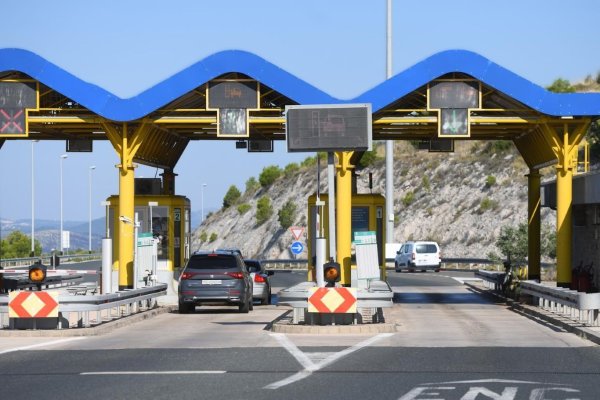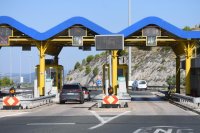
Croatia by Car 2025: Route, Toll Fees, and ENC Guide
Croatia by Car 2025: Route, Toll Fees, and ENC Guide
Are you planning a trip to Croatia by car in 2025?
Depending on your starting point, you have several route options. The best
routes from Slovakia to Croatia usually lead through Austria,
Slovenia, or Hungary. See an overview of the current toll fees in these
countries below:
Austrian Vignette: The current price for a 1-day
Austrian vignette is €9.30 or €12.40 for a 10-day
vignette. You can conveniently purchase the electronic vignette online
on the official website: https://www.asfinag.at/en/toll/vignette/
Slovenian Vignette: You can purchase the Slovenian
electronic vignette on the website: https://evinjeta.dars.si/selfcare/en.
You can choose between a 7-day vignette for €16 or a monthly
vignette for €32.
Traveling to Croatia via Hungary: If you plan to
travel through Hungary, information about the motorway vignette
will definitely come in handy. Although it can also be purchased at some petrol
stations (often at higher prices), we have long preferred the convenient online
purchase via the official website: https://ematrica.nemzetiutdij.hu/.
We paid approximately €16.80 (HUF 6,620) for a 10-day vignette,
which is really simple and quick.
Route options through Hungary:
Route via Komárno: Our journey
traditionally began towards Komárno. Approximately 8 kilometers after
the Hungarian Komárom, there is a turn-off for the M1 motorway towards
Budapest. Although this route is slightly longer, it may be comparable in
time to our chosen route via Székesfehérvár. We decided to take roads number
13 and 81, which led us to Székesfehérvár (approximately 75 km).
However, it should be noted that this section can be quite busy during working
days due to truck traffic, so if you have the opportunity, we recommend
traveling on the weekend. Before arriving in Székesfehérvár, we stayed in the
right lane to smoothly merge onto the bypass towards the M7 motorway.
From that moment on, our indicators pointed towards Siófok/Nagykanizsa/Zagreb.
Route via Bratislava: If your journey leads through Bratislava, you can choose a route through Austria and Slovenia. We will outline the route through Hungary for you. From Bratislava, it is advisable to choose the Čunovo/Rajka border crossing. From the village of Rajka, continue on Hungarian roads towards Mosonmagyaróvár. Near Mosonmagyaróvár, join the M1 motorway towards Győr/Budapest. Continue on the M1 motorway towards Győr. At the city of Győr, follow the exit towards Székesfehérvár onto road number 81. You will travel approximately 73 kilometers on this road to Székesfehérvár, then follow the signs for the bypass towards the M7 motorway. From that moment on, our indicators pointed towards Siófok/Nagykanizsa/Zagreb. You can choose between the route from Bratislava and the route through the city of Szombathely, which is faster and shorter, but this route has a longer section off the highway.
Route via Košice: If your journey starts from eastern Slovakia, use the Milhosť border crossing via Košice. Continue through Hungary on the M30/E71 motorway towards Miskolc. Later, follow the signs marked M3 towards Budapest. When approaching Budapest, follow the signs marked M0 and M31; you will also find the HR designation on the information boards. Continue on the M0 road until you see a sign marked M7 towards Balaton/Nagykanizsa. From that moment on, our indicators pointed towards Siófok/Nagykanizsa/Zagreb.
We had a smooth crossing of the Croatian border via the Letenye/Goričan border crossing. Immediately after the border, we were greeted by an information board with speed limits. We strongly recommend adhering to these rules, especially considering that a large number of speed cameras have been installed on Croatian roads since 2024.
Toll fees in Croatia (Mýto): If you have already visited Croatia, you know that the classic vignette system does not operate here. Instead, tolls are paid based on the distance traveled. Although there was initial talk of introducing electronic vignettes at the beginning of 2025, the latest information suggests that this system will likely not be launched until the end of 2026.
Therefore, the toll booth system will continue to
apply in 2025. It works simply: you take a ticket when entering the
motorway and hand it over and pay the corresponding amount when exiting. You
can pay in cash in euros or by credit card.
ENC (Electronic Toll Collection): Faster travel without waiting However, if you want to avoid potential queues at toll booths, we recommend considering purchasing an ENC unit (Electronic Toll Collection).
How it works: The ENC device is simply placed on the windshield of your vehicle. When passing through special, usually yellow lanes at toll booths, the toll is automatically deducted from the prepaid amount.
Advantages: Using ENC usually provides you with a toll discount (most often 21.74% on the prepaid amount). For example, if you prepay €100, you will actually pay only €78.26. In addition, you save time thanks to faster passage without waiting in lines.
Price of the ENC unit: The device itself currently costs €15. However, there are also ENC Packages that include the device and a certain credit:
Package "S" €60.00: ENC device (€15.00) + toll value €57.50
Package "M" €90.00: ENC device (€15.00) + toll value €95.84
Package "L" €120.00: ENC device (€15.00) + toll value €134.17
Where to buy ENC: You can find sales points on the website: https://www.hac.hr/hr/cestarina/prodajna-mjesta?points=1. On our route, the first place where you can buy ENC is the Varaždin toll gate. If you do not want to exit the highway, we recommend purchasing it at the Sv. Helena toll gate before Zagreb or approximately 150 meters before the Lučko toll gate (address: https://maps.app.goo.gl/1d94PAo6CiNH3jnY8).
The current price for a personal vehicle up to 3.5 tons on
the A4 Goričan – Sv. Helena section is €6.40.
After passing the Sv. Helena toll gate, we continued
on the A4 motorway (E65) and followed the signs for Zagreb.
Later, we followed the signs for Split – Rijeka all the way to the Lučko
toll gate. After paying the toll, we continued on the A1 motorway
for approximately 70 kilometers to the Bosiljevo motorway junction.
If you were heading to Istria, at this point you would follow the Rijeka/Pula
signs and switch to the A6 motorway.
However, our destination was the island of Brač, so at the Bosiljevo junction we turned towards Split and continued on the A1 motorway.
Overview of toll prices from Lučko (Zagreb) to selected destinations:
Exit Zadar Zapad: €17.60 (for the direct road to Zadar)
Exit Zadar Istok: €18.20 (for Sukošan, Sveti Petar na Moru)
Exit Benkovac: €19.40 (for Sveti Filip i Jakov, Biograd na Moru, Pakoštane, Drage) - Check out accommodation around Biograd
Exit Pirovac: €20.80 (for Pirovac, Tribunj, Vodice, Vodice Srima) - Check out accommodation around Vodice
Exit Šibenik: €22.10 (for Šibenik, Brodarica)
Exit Dugopolje (Split): €26.40 (our last exit)
After leaving the A1 motorway at the Dugopolje (Split) exit and paying the toll, we simply followed the Split signs and then the signs for ferries, as our journey continued to the island of Brač - Check out accommodation on the island of Brač
We hope we have helped you with your planning for your car journey to Croatia.
If you are interested in how the ferry transport works and
how much you will pay for the trip to the island, follow our next blog post
where we will share this part of our trip to Croatia in 2025! We hope
this information helps you in planning your own trip! Happy travels!



